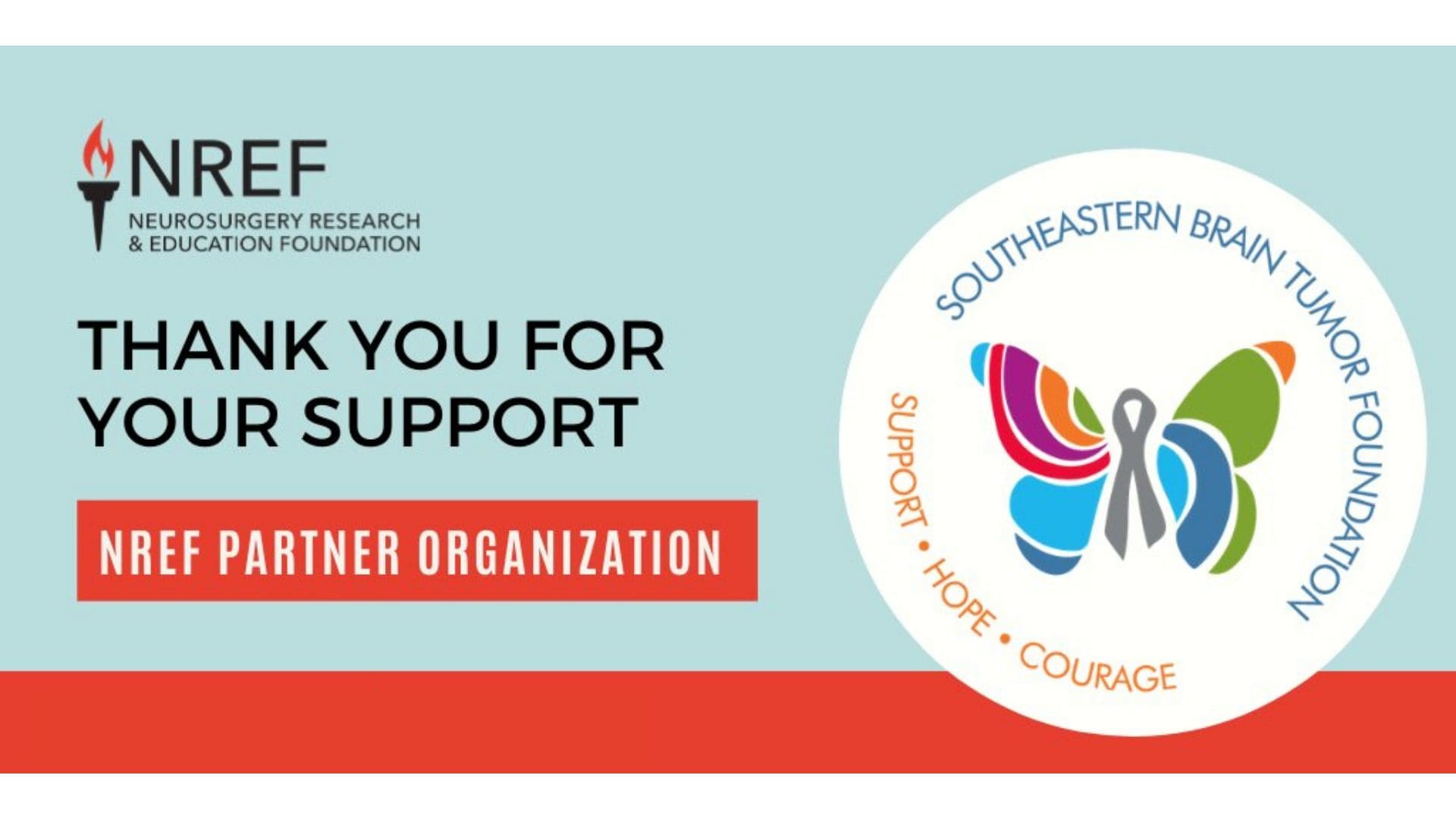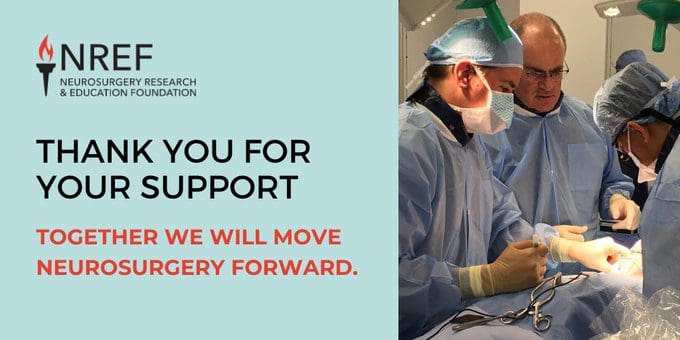Impact
Awarding Grants to Research Projects Focused on Brain Tumor RESEARCH & Treatment
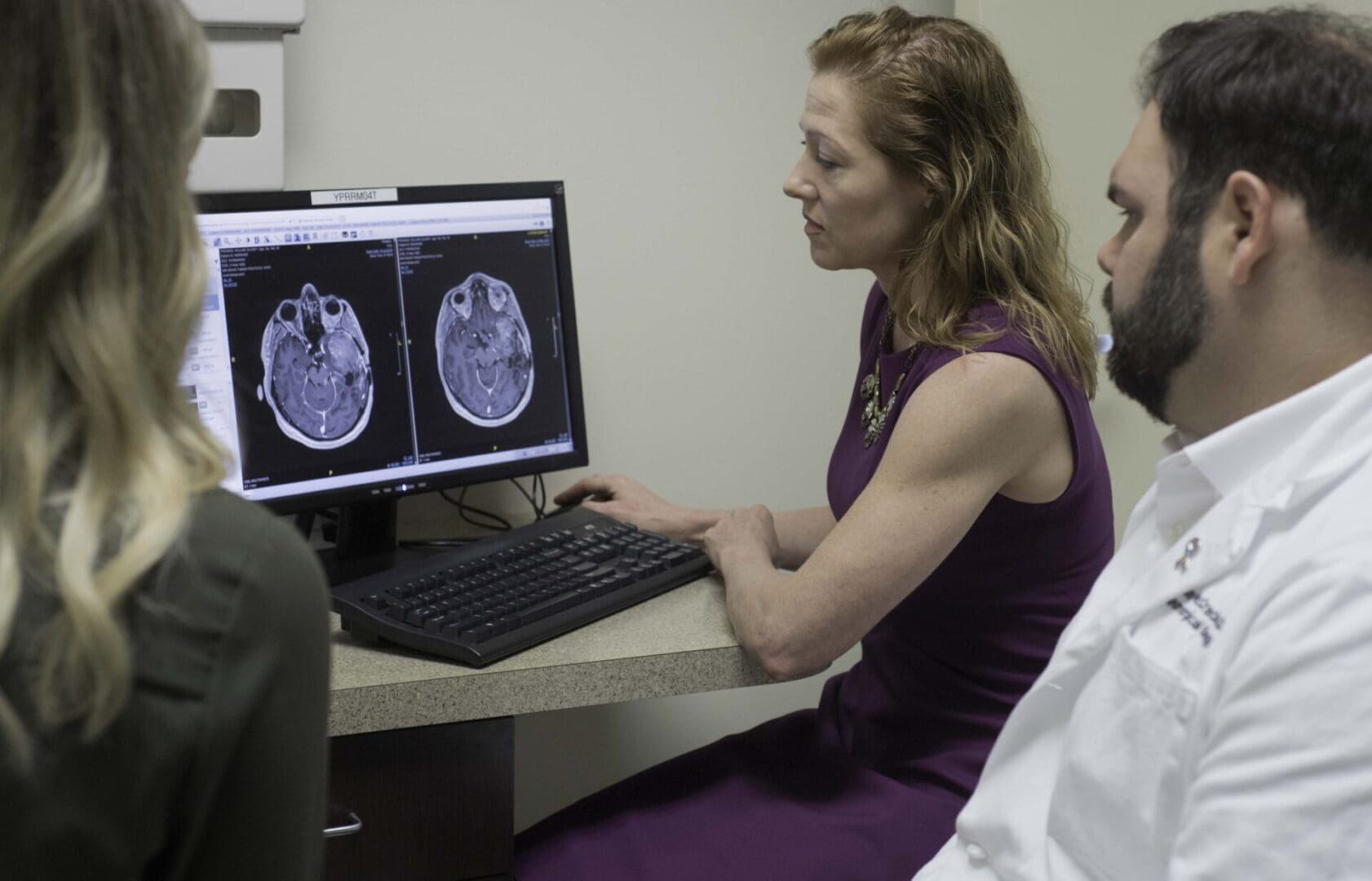
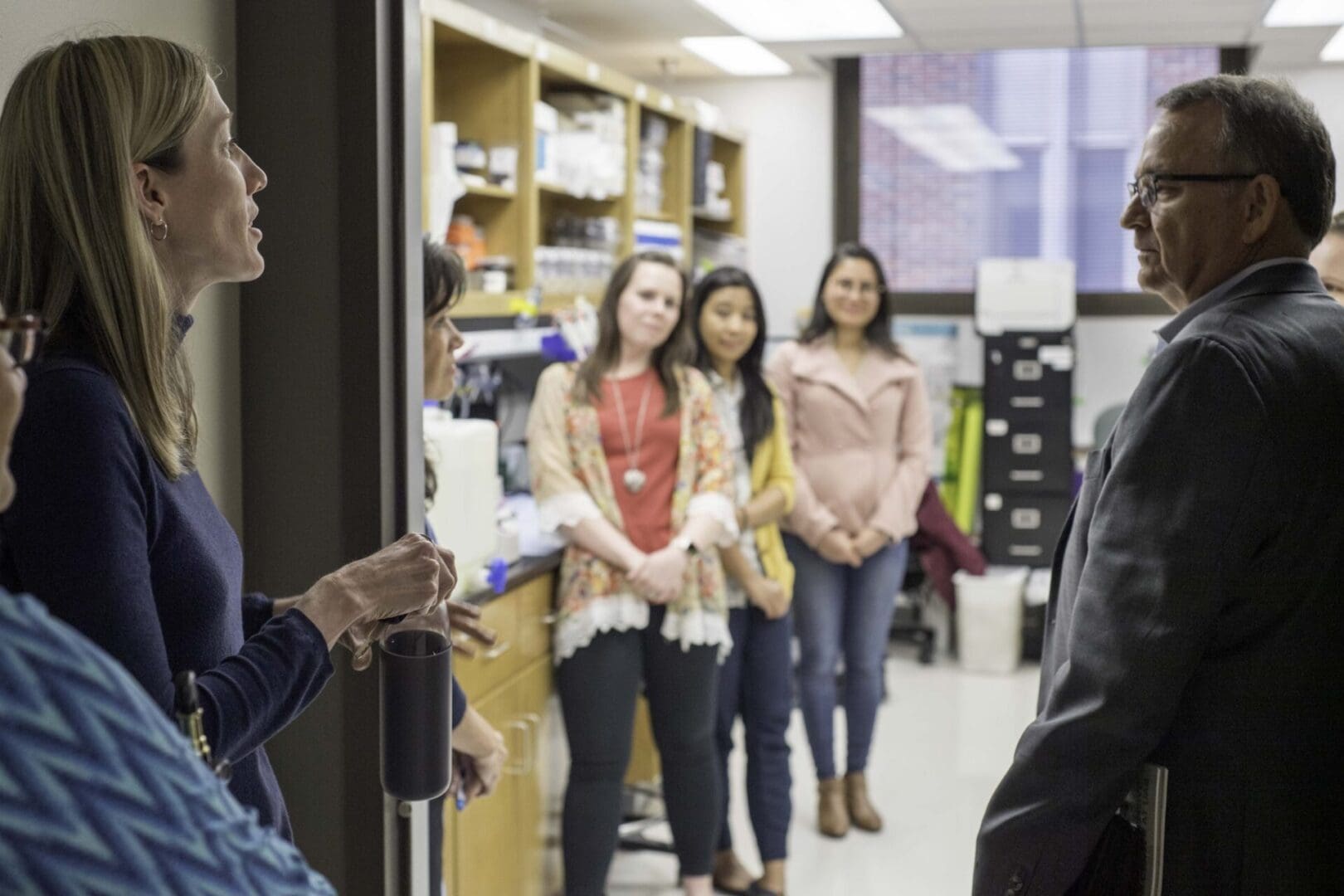
Research
The SBTF is a 501(c)3 nonprofit, public charitable organization based in Atlanta, GA. We fund scientific research and investigator-initiated clinical trials focused on finding a cure for brain tumors. Since 1995, the SBTF has awarded nearly $3M in research grants. Our research grant philosophy is to provide seed money and stimulate brain tumor research. At the SBTF we:
- Seek out the best science relying on a Scientific Advisory Committee to review and score all applications.
- Focus on translational research projects and investigator-initiated clinical trials focused on finding a cure for brain tumors.
- Strive to select and fund the project which has the best chance of leading to a cure
We believe seed funding will foster the continued development of emerging concepts, treatments, and therapies. We hope the projects funded by the SBTF might be a springboard from which researchers will garner additional data resulting in publications & recognition which has the potential to secure support from larger funding agencies, such as the National Institute of Health for brain tumor research. The SBTF research grant funds may not be used to support indirect costs such as utilities, legal fees, equipment rentals and administrative staff expenses.
brain tumor Research Grants Awarded
We are pleased to provide a list of brain tumor research grant projects which have been funded by the SBTF. Funding for these research projects has been made possible through the generosity of our constituents and the support of event participants. If you'd like to make an impact, visit our Donate page. Your generosity is appreciated.
Please feel free to contact us with any questions you may have regarding our research grants. We can be reached via email at info@sbtf.org
The Brain Tumor Funders' Collective
Brain Tumor Funders' Collaborative (BTFC) Liquid Biopsy Grants
Funded in partnership with the BTFC
To Be Determined
The Mark Foundation for Cancer Research
MFCR and SBTF agree to co-fund research project(s) from an RFP on the topic of glioblastoma.
Funded by The Southeastern Brain Tumor Foundation in partnership with The Mark Foundation for Cancer Research
Define Bayik, PhD, Tyler Miller, MD, PhD, Ilon Liu, MD, Luiz Geraldo, MD, PhD, and Hinda Najem, MD
Sylvester Comprehensive Cancer Center, Case Western Reserve University, Charite University Hospital Berlin, NYU Langone Health, Northwestern University
Supported travel to The Mark Foundation for Cancer Research & The Sontag Foundation Workshop entitled "No Stone Unturned: Relentless Pursuit of a Cure for Glioblastoma", providing them with valuable opportunities to deepen their expertise, engage with colleagues, and advance their careers as rising leaders in brain tumor research.
Southeastern Brain Tumor Foundation Career Development Award
Costas Hadjipanayis, MD
University of Pittsburgh
A Multicenter Study to Assess the Feasibility of Gleolan (ALA/Aminolevulinic Acid HCl) in Pediatric Brain Tumor Patients After Delayed Administration
Funded by the SBTF via The Anna Feyerherm Moxie Award
Karen Groff, MEng
New York University
Optimization of a CD97-targeting Antibody-drug Conjugate for Treatment of GBM
Medical Student Summer Fellowship Grant distributed via partnership with the American Brain Tumor Association
Venina Kalistratova
University of California San Francisco
Targetable gene expression changes mediate extravasation of breast cancer cells from the circulation and local proliferation in the brain
SBTF Award on behalf of the CNS Section on Tumors
Nicholas Dadarino
Columbia Neurosurgery
Intra-Tumoral Convection Enhanced Delivery of an Immunostimulatory Agent Extends Survival in GBM Model
SBTF Award distributed via partnership with American Association of Neurological Surgeons (AANS)
Daniel Richardson, MD
University of North Carolina Chapel Hill
Eliciting Patient Treatment Preferences Through Best-Worst Scaling to Inform Treatment Decisions In A Cohort Of Glioblastoma Patients
SBTF Research Award
Andrea Otamendi-Lopez, MD
Mayo Clinic, Jacksonville
UAP1 Inhibition as Novel Therapy to Fight GBM Through Extracellular Matrix Disruption
SBTF Award distributed via partnership with American Association of Neurological Surgeons CNS Section on Tumors (AANS/CNS)
Joshua Casaos, MD
UCLA Neurosurgery
1381038 EZH2 inhibition as a potential therapeutic avenue in the treatment of meningioma
SBTF Award distributed via partnership with American Association of Neurological Surgeons (AANS)
Himanshu Dashora, BS
Cleveland Clinic
Evaluating the Role of Translational Regulation in GSCs for Hypoxic Adaptation
Medical Student Summer Fellowship Grant distributed via partnership with the American Brain Tumor Association
Charuta G. Furey, MD
Barrow Neurological Institute
Characterizing glioma evolution through longitudinal cerebrospinal fluid liquid biopsy in a Phase 0/2 clinical trial of niraparib for newly-diagnosed glioblastoma
NREF & SBTF Research Fellowship Grant on behalf of the AANS/CNS Section on Tumors
Edjah Nduom, MD
Emory University
Intratumoral Anti-CD29 Treatment to Improve Brain Tumor Immune Therapy
Discovery Grant Distributed via partnership with American Brain Tumor Association (ABTA)
Mark Youngblood, MD, PhD
Northwestern University
Molecular Markers of Meningioma Growth Arrest After HDAC Inhibition
Research Fellowship Grant Distributed via partnership with Neurosurgery Research and Education Foundation (NREF) and the Tumor Section of the American Association of Neurological Surgeons (AANS) and Congress of Neurological Surgeons (CNS)
Eric Chalif, BA
University of California, San Francisco
Replicating Retroviral Delivery of Immune Costimulatory Agents in Glioblastoma
Distributed via an American Brain Tumor Association (ABTA) Medical Student Summer Fellowship Award
Dagoberto Estevez Ordonez, MD
University of Alabama, Birmingham
Evaluation of immunologic parameters in canine glioma patients treated with an oncolytic herpes virus
SBTF Award distributed via partnership with American Association of Neurological Surgeons (AANS)
Justin Zihan Wang, MD, BSc
University of Toronto
Establishing the utility of plasma-based liquid biopsies in meningiomas using cell-free methylated DNA immunoprecipitation with deep sequencing
Distributed via partnership with Neurosurgery Research and Education Foundation (NREF) and the Tumor Section of the American Association of Neurological Surgeons (AANS) and Congress of Neurological Surgeons (CNS)
Yusuf Mehkri, BS
University of Florida
The Immune Effects of a Novel Vaccine in Combination with Standard of Care
Distributed via an American Brain Tumor Association (ABTA) Medical Student Summer Fellowship Award
Terry Burns, MD, PhD
Mayo Clinic
Intratumoral Extracellular Metabolomic Biomarkers of IDH-mutant Glioma
Distributed via American Brain Tumor Association (ABTA) and American Association of Neurological Surgeons (AANS) Young Investigator Award.
Troy Carnwath
University of Cincinnati
Distributed via a Neurosurgery Research and Education Foundation (NREF) Medical Student Summer Medical Fellowship Award
Maleeha A Qazi
University of Toronto
Characterization of the Minimal Residual Disease in Human Glioblastoma
Distributed via an American Association of Neurological Surgeons (AANS) Tumor Section Award.
David S. Baskin
Houston Methodist Hospital
Oncomagnetics: A potential new noninvasive magnetic stimulation technology to treat glioblastoma
Distributed via a Congress of Neurological Surgeons (CNS) Tumor Section Award.
Emily Lavell
Mayo Clinic-Jacksonville, FL
Role of Glioma Extracellular Vessicles on the Transformation of Neural Stem Cells
Distributed via an American Brain Tumor Association (ABTA) Medical Student Summer Fellowship Award
Sophie Peeters, MD
University of California, Los Angeles
Neoantigens arising from alternative pre-mRNA splicing may be targeted by tumor-specific T lymphocytes in histone H3.3 G34R mutant pediatric GBM
Distributed via partnership with Neurosurgery Research and Education Foundation (NREF) and the Tumor Section of the American Association of Neurological Surgeons (AANS) and Congress of Neurological Surgeons (CNS)
Gary Kohanbash, PhD.
Children’s Hospital of Pittsburgh
Theragnostic Antibody for Improving Immunotherapy and Immune Monitoring in Glioma
Distributed via an American Brain Tumor Association (ABTA) Discovery Grant
Munjal Acharya, PhD
University of California, Irvine
ABTA Discovery Grant Targeting Glioma Complement Signaling
Distributed via an American Brain Tumor Association (ABTA) Discovery Grant
Maryam Rahman, MD, MS, FAANS
University of Florida
Vaccine Strategy to overcome treatment induced immunosuppression in glioma
Distributed via an American Brain Tumor Association (ABTA) Discovery Grant
Awarded July 2018
David J. Robbins, University of Miami
“Evaluating Efficacy of Minnelide in MYC Driven Medulloblastoma”
Roy E. Strowd, Wake Forest
“A Novel Vaccine-Based Model to Evaluate Cancer and Treatment Induced Immune Dysfunction and Determine the Optimal Times for Incorporating Immunotherapy in Gliomas”
Anita Hjelmeland, Ph.D., University of Alabama at Birmingham
“Carbonic Anhydrase Inhibition to improve Glioblastoma Standard of Care”
Rebecca Ihrie, Ph.D., Jonathan Irish, Ph.D., Vanderbilt
“Dissecting the contribution of the niche and immune cells to patient outcome using single-cell protein measurements”
Yiping He, MD, Ph.D., Duke University, Preston Robert Tisch Brain Tumor Center, Durham, NC
Exploiting MTAP for more effective treatment of glioblastoma with temozolomide
Eric M. Thompson, MD, Duke University Medical Center, Durham, NC
Optimizing the Convection Enhanced Delivery of Targeted Agents for Midline gliomas
Erwin G. Van Meir, Ph.D., Emory University, Atlanta, GA
Investigating the role of N-cadherin in the therapeutic resistance of Glioblastoma
Awarded May 2015
Hai Ye, MD, Ph.D., Duke University Medical Center, Durham, NC
Developing a clinically relevant animal model and investigating therapeutics for targeting PPM1D mutations in brainstem glioma.
Keqiang Ye, Ph.D., Emory University, Atlanta, GA.
PIKE-A/Cdk4 Complex is a Novel Drug Target for Treating Glioblastoma
Awarded May 2014
Hui-Kuo Shu, Emory University, Atlanta, GA
Therapeutic Targeting of Id1 in Glioblastomas
Tracy-Ann Read, Ph.D., Emory School of Medicine, Atlanta, GA
Characterizing the role of second hit genes in SNF5 deficient tumors
Matthias Gromeier, MD, Duke University Medical Center, Durham, NC
Oncolytic Polio Immunotherapy for Glioblastoma
Chin Chiang. Ph.D., Vanderbilt University Medical Center, Nashville, TN
Redox Function in Medulloblastoma
Kevin Cassady, MD, University of Alabama, Birmingham, Birmingham, AL
The oHSV-Mediated Immune Response: Engineering Long-Term Anti-GBM Immunity”
Awarded April 2013, Award Ceremony September 2013
Prakash Chinnaiyan, MD, H. Lee Moffitt Cancer Center and Research Institute
Determining Biologic Consequence of Cysteine Catabolism
Lawrence S. Lamb, Jr., Ph.D., Wallace Tumor Institute, University of Alabama at Birmingham
Temozolomide-resistant gene-modified yS T cells for High Grade Gliomas
Renee Read, Ph.D., Emory University School of Medicine – Phil Jory Research Award Recipient
Revealing a role for Stk17A in glioblastoma invasion and proliferation
Awarded April 2012
Satish K. Chitneni, Ph.D., Duke University Medical Center
PET Imaging iDH1-R1324H in Glioma
Jialiang Wang, Ph.D., Vanderbilt University
GBM Stem Cell Treatment
Erwin G. Van Meir, Ph.D., Emory University
BA1 Tumor Supressor in Medulloblastoma
Etty (Tika) Benveniste, Ph.D., University of Alabama at Birmingham
Defining the Role of Nf-kB in Promoting STAT3 Activation in Malignant Gliomas
Award Ceremony conducted April 15, 2011
Craig Castellino, MD, Ph.D., Emory University
“Inhibition of WIP1-mediated metastasis in medulloblastoma”
Laura Johnson, Ph.D., Duke University
“Reversing CD28:B7 ligand/receptor superfamily-mediated immune deficits in cytomegalovirus infected GBM patients”
Hai Yan, MD, Duke University
“The role of D-2-hydroxyglutarate in glioma pathology, diagnosis and therapy”
Tracy-Ann Read, Ph.D., Emory University
“Identification and Characterization of the Cell of Origin for Atypical Teratoid/Rhabdoid Tumors (AT/RTS)”
Award Ceremony conducted March 2010
Dr. Van Meir, Ph.D., Emory University
“Therapeutic Modulation of the Methyl-CpG-Binding Domain Protein 2 (MBD2) in Glioma”
Dr. Chandramohan, MD. Ph.D., Duke University
“D2C7-NZ-1: A Novel Recombinant Trispecific Single-Chain Immunotoxin for the Treatment of Malignant Glioma”
Dr. Laura Johnson, MD. Ph.D., Duke University
“Research Project on EGFRvIII Chimeric Antigen Receptor-Modified T Cell Immunotherapy of Glioblastoma”
Dr. Jeffrey Olson, MD, Emory University
“Glioblastoma Stem Cell Resistance to Proteasome Inhibition: Assessment of Mechanisms”
Awarded, May 17, 2009
Dr. Nozell, MD, University of Alabama
“Role of NF-KB in promoting tumorigenicity”
Dr. Gromeier, MD, Duke University
“Oncolytic virotherapy for metastatic medulloblastoma”
Dr. Mitchell, MD, Duke University
“Enhancing immunity to malignant glioma during hematopoietic recovery from lymphodepletive temozolomide”
Dr. Reya, MD, Duke University
“Creating a new mouse model for large cell anaplastic medulloblastoma”
Dr. Costas G. Hadjipanayis, MD. Ph.D., Emory University
“EGFRVIII antibody conjugated magnetic nanoparticles for targeted imaging and therapy”
Awarded, January 30, 2008
Dr. Yiting Cao, MD, Duke University
For his work with Dr. Jeremy Rich and the Erythropoietin Regulation of Brain Tumor Stem Cells.
Dr. Charlie Hao, MD, Emory University
For his work of Combination Treatment of GBM with TRAIL and Hsp90 Inhibitors.
Dr. Erwin Van Meir, Ph.D., Emory University
For work on a novel anti-angiogenic function for the p14ARF tumor suppressor in Glioma.
Dr. Michael W. Graner, Ph.D., Duke University
Heat Shock Protein Vaccines as Immunotherapy against Malignant Glioma.
Dr. Erwin Van Meir, Ph.D., Emory University
Pre-clinical development of a Novel Small Molecule HIF-1 Inhibitor for the Therapy of Malignant Brain Tumors.
Dr. Matthias Gromeier, MD, Duke University
Evaluation of Oncolytic Poliovirus Recombinants in a Syngeneic Rodent Glioma Model
Dr. Hai Yan, Ph.D., Duke University
Characterization of OTX2 as a Novel Therapeutic Target and Prognostic Marker Medulloblastoma
Dr. Chunhai (Charlie) Hao, MD, Ph.D., Winship Cancer Institute – Emory University
Development of TRAIL-based Therapies for Glioblastomas
Anita Hjelmeland, Ph.D., Duke University
PTEN Loss in Gliomas Promotes Pro-Tumorigenic Responses to Transforming Growth Factor Beta
In the clinician's words...

Dr. Anita Hjelmeland, Duke University & University of Alabama, Birmingham
SBTF Research Grant 2005, Jerry Zucker Memorial Award 2017
"Brain tumors are the number one cause of cancer related death in children, with medulloblastoma (MB) being the most common subgroup. Genomic-based classification has enabled the stratification of MB into distinct subgroups: WNT, SHH, Group 3 and Group 4, each with its own histology, molecular drivers and outcomes. The standard of care for MB patients includes surgery, followed by radiation of the brain and spinal cord, and subsequent chemotherapy. Although significant survival benefit occurs for many patients, some of these tumors are metastatic and resistant to conventional therapies, and thus classified as high-risk disease. Moreover, many children that survive this standard of care treatment will develop severe cognitive and quality of life issues as they get older. These statistics highlight the urgent need to develop the next generation of cancer therapeutics for MB patients, especially for those harboring high-risk disease.
A natural compound used in Chinese medicine for centuries, triptolide, has been shown to have potent antitumor activity. Despite its well-known efficacy, the mechanism of action of triptolide in cancer remains unclear. We performed computer-based database analysis of genetic biomarkers derived from such patients. Our analyses identified group 3 medulloblastoma patients as likely to benefit from triptolide treatment. Consistent with this prediction, we showed that triptolide attenuates group 3 medulloblastoma growth and increases survival of mice harboring such tumors. Mechanistically, we show that triptolide works by reducing the levels of an enzyme (OGT) capable of modifying the activity of a key driver of gene expression (Myc) and that without this modification MYC was degraded. Like triptolide, Minnelide (a triptolide derivative in clinical trials), reduced the tumor burden of patient derived group 3 medulloblastoma models. Thus, triptolide/Minnelide represents a novel therapeutic strategy to evaluate in MYC expressing group 3 medulloblastoma patients, which represents a cohort of pediatric cancer patients with a dismal outcome."

Dr. David Robbins, University of Miami
SBTF Research Grant, Awarded 2018
Dr. Keqiang Ye received a grant funding for a project entitled "PIKE-A/Cdk4 Complex is a Novel Drug Target for Treating Glioblastoma"
Amplification of chromosome 12q13-q15 (Cyclin-dependent kinase 4 (CDK4) amplicon) is frequently observed in numerous human cancers including GBM (Glioblastoma). Phosphoinositide 3-kinase enhancer (PIKE) is located in CDK4 amplicon. However, the pathological significance of CDK4 amplicon in GBM formation remains incompletely understood. We show that co-expression of PIKE-A and CDK4 in TP53/PTEN double knockout GBM mouse model additively shortens the latency of glioma onset and survival compared to overexpression of these genes alone. Consequently, p-mTOR, p-Akt and p-ERK pathways are highly upregulated in the brain tumors, in alignment with their oncogenic activities by CDK4 and PIKE-A stably transfected in GBM cell lines. Hence, our findings support that PIKE amplification or overexpression coordinately acts with CDK4 to drive GBM tumorigenesis. This finding was reported in Oncogene 2017.
(Co-amplification of phosphoinositide 3-kinase enhancer A and cyclin-dependent kinase 4 triggers glioblastoma progression. Qi Q, Kang SS, Zhang S, Pham C, Fu H, Brat DJ, Ye K. Oncogene. 2017 Aug 10;36(32):4562-4572.)

Dr. Keqiang Ye, Emory University
Jeff Epperson Memorial Award Grant, Awarded 2016
Dr. Michael Graner, PhD received funding for a research grant entitled "Heat Shock Protein Vaccines as Immunotherapy against Malignant Glioma."

Dr. Michael Graner, PhD, Duke University
SBTF Research Grant, Awarded 2006
Dr. Ihrie and Dr. Irish received funding though the Ann Faulkenberry Memorial Award in 2017 for their project entitled “Dissecting the contribution of the niche and immune cells to patient outcome using single-cell protein measurements.”
"Funding from the SBTF to the Ihrie and Irish groups allowed us to leap forward in our studies of primary brain tumor tissue using single cell approaches. With the support of this award, we developed a suite of bench and computational tools, used these to reveal previously unrecognized cells within brain tumor tissue, and identified novel targets in these cells. Our approach focused on measuring many proteins at the same time in millions of tumor cells. This approach revealed types of cells that have not been observed in healthy brains. Out of all the new cell types seen, there were two that stood out – one that was seen only in very aggressive tumors, and another that was a hallmark of tumors with much better than average outcomes. We believe these findings, which were reported in eLife in 2020, represent a fundamental advance in our understanding of glioblastoma. No prior work had resolved glioblastoma cell types that were so closely linked to patient outcomes. We named the two new cell types based on the clinical outcomes of tumors that contain them. Perhaps the most important cell type found is the Glioblastoma Negative Prognostic (GNP) cell subset, which is found in the most aggressive glioblastomas. These GNP cells are the ‘worst of the worst’ within this terrible disease."
One of the main articles supported by this award can be freely accessed here.
Popular coverage of the work and descriptions of their broader collaboration can be found in this article, and on healio.com and was highlighted in an article from Vanderbilt Medicine.
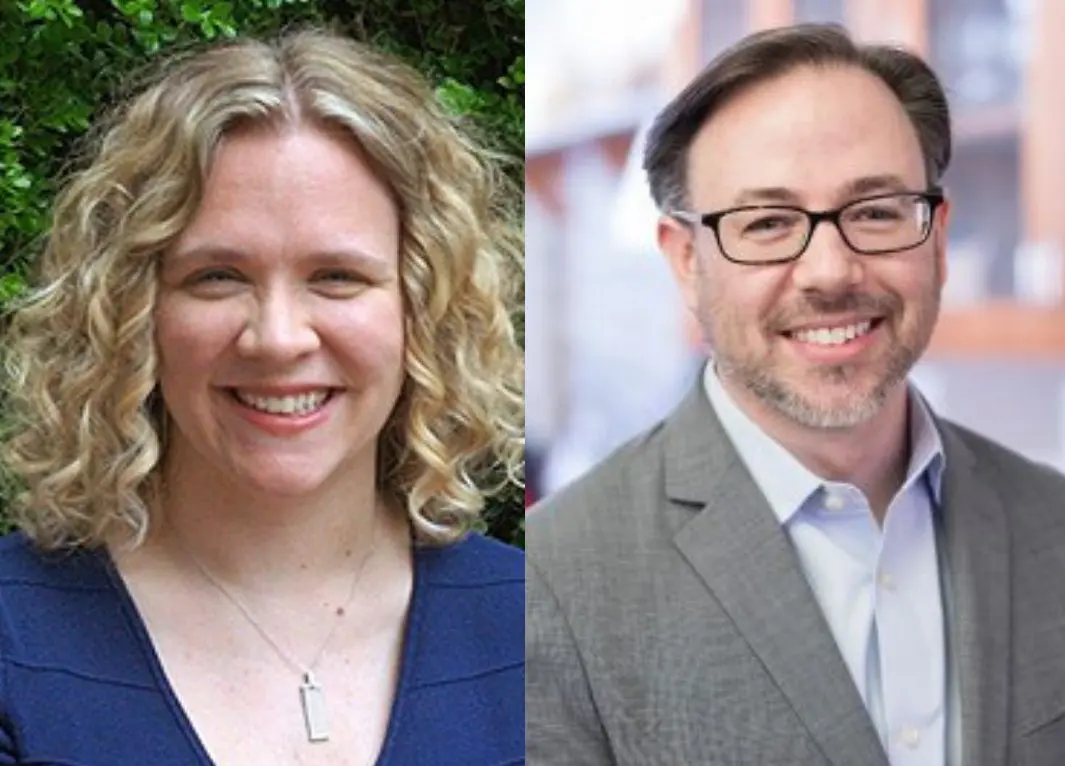
Rebecca Ihrie, Ph.D., Jonathan Irish, Ph.D., Vanderbilt University
SBTF Ann Faulkenberry Memorial Award, Awarded 2017
Radiation therapy (RT) for brain cancers often leads to uncontrolled activation of brain’s immune cell microglia and a series of unfortunate events called complement activation. These complement proteins in the brain are important for maintaining the synaptic landscape that forms memory. We used a complement receptor inhibitor (PMX205) to prevent uncontrolled activation of microglia and complement cascade that prevented brain injury surrounding the brain tumor. In a nutshell, we found a way to prevent brain injury and cognitive dysfunction without interfering with the therapeutic efficacy of RT for brain cancers.
PMX205 can be taken orally and it’s currently under clinical trial for ALS in Australia that will facilitate clinical translation in the future.
ABTA Discovery Grant Targeting Glioma Complement Signaling
Distributed via an American Brain Tumor Association (ABTA) Discovery Grant

Dr. Munjal Acharya, PhD University of California, Irvine
SBTF Research Grant, Awarded 2020
Dr. Hao's clinical interests are mainly in the molecular diagnosis and classification of brain tumors.
"The combination treatment of GBM with TRAIL and Hsp90 inhibitors” did not show synergistic effects on GBM after we tested the drugs in combination on a panel of glioblastoma cell lines and stem cell-enriched neurospheres."

Dr. Chunhai "Charlie" Hoa, Emory University
SBTF Research Grant, Awarded 2007
Yusuf Mehkri’s lab has developed a novel hydrogel vaccine, which can better stimulate immune cells to attack GBM cells in the brain. Yusuf will examine using this novel vaccine in combination with radiation and temozolomide to gauge the efficacy of the vaccine to increase GBM cell death. He also aims to determine the optimal timing of administering the vaccine relative to standard of care. The results of this project could lead to an effective off-the-shelf vaccine for GBM patients.
"Our group has shown that a dendritic cell (DC – a type of immune cell) vaccine can induce a robust anti-tumor response and can extend overall survival in patients with glioblastoma (GBM). The vaccine effectively targets cytomegalovirus (CMV) antigens that are uniquely present in GBM. Studies have shown that CMV can affect the malignancy of GBM cancer cells helping them to survive and evade immune cells in the brain. Although effective, one significant issue with this current DC vaccine model is production. Production takes weeks, is costly, and requires expertise and invasive procedures for patients. To address this issue, we have developed a novel vaccine that can be loaded with a chemokine (chemical signal) to attract DCs and a tumor antigen to initiate an anti-tumor immune response. Thus far, we have shown that this novel vaccine can induce a strong immune response resulting in tumor regression in mouse cancer models.
We now need to test how this vaccine interacts with standard therapy. Given the immunomodulatory properties of temozolomide (TMZ) and radiotherapy (RT), we hypothesize that timing of RT and TMZ delivery can be used to enhance the immune response generated by our hydrogel-based vaccine. This project will evaluate and compare these effects in mouse cancer models in the hopes of maximizing the vaccine’s therapeutic efficacy. Findings from this project will bring us one step closer to an off-the-shelf vaccine that can be added to the standard of care regimen for patients with GBM. It will also help drive further research into similar vaccine platforms that are easy to produce and effective."
Yusuf Mehkri, University of Florida
MSSF Research Project, Awarded 2021
Intratumoral Extracellular Metabolomic Biomarkers of IDH-mutant Glioma
IDH-mutant gliomas generally present at lower grade and are treated, but then recur years later. Therefore, clinical trials can take decades. Dr. Burns will capture biomarker information from patients undergoing treatment and compare it to biomarkers from mouse models. He hypothesizes that the information will yield rapid, individualized information about a patient’s response to a treatment, reducing the time spent on ineffective therapies and ultimately shortening clinical trials.
"IDH-mutant gliomas are the most common gliomas of young adults. Despite initial sensitivity to chemotherapy and radiation, they invariably progress into treatment-resistant and ultimately fatal tumors. Translation of novel therapies for glioma is complicated by the lack of biomarkers that indicate treatment effectiveness. Survival remains the gold standard outcome measure. Clinical trials for patients with IDH-mutant gliomas may require a decade to yield survival results, hampering timely progress in a complex field. When trials fail, as is typically the case, few insights into why the treatment failed are available to guide therapeutic improvements. The cycle is then repeated with new novel candidates leading to a growing list of failed drugs without clear directions for improvement. New tools are urgently needed to accelerate discovery of novel therapies. Here we propose to evaluate biomarkers from live human IDH-mutant gliomas during surgery, and will compare these to findings from mice carrying human IDH-mutant gliomas. We will also determine if biomarker levels from the live tumor respond to currently available therapies in real time in mice. If so, this work can provide a path forward to more rapidly determine which therapies or combinations are most effective within individual patients. We are optimistic that this strategy can open a new frontier of rapid individualized feedback which is so urgently needed to cure gliomas."
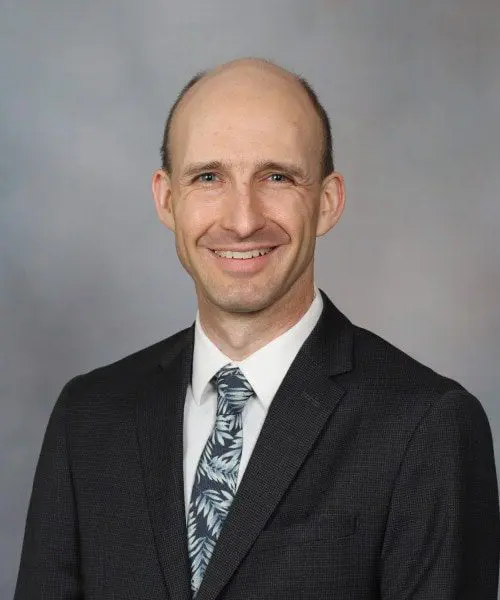
Terry Burns, MD, PhD, Mayo Clinic
SBTF Research Grant 2021
Recent molecular studies have revealed important insights into the biology of meningioma
formation and progression. However, clinical translation has been limited, and there remain no effective chemotherapies. Due to the dependence of these tumors on epigenetic dysregulation, histone deacetylase inhibitors (HDACi) represent a promising therapeutic approach, and numerous reports have observed efficacy of these drugs in arresting meningioma growth in culture and mice. Translation into a clinical setting will require a better understanding of the molecular pathways mediating growth inhibition, as well as robust biomarkers that identify optimal patients. In the present study, I will perform comprehensive molecular profiling on frozen meningioma specimens from HDACi responsive and resistant patients, aiming to identify predictive biomarkers for future clinical use. Furthermore, I will use transcriptional and epigenetic profiling to elucidate molecular changes associated with HDACi treatment, comparing a library of patient derived cell cultures before and after exposure to this medication. The results of this study will lay essential groundwork for future clinical trials, providing key markers for prospective patient stratification, as well as insights into downstream mechanisms that could identify synergistic co-therapies and potential pathways of resistance.

Dr. Mark Youngblood, MD, PHD, Northwestern University
SBTF Research Grant, Awarded 2022
The goal was to molecularly characterize the tumor microenvironment (TME) and evaluate immunologic parameters in canine glioma patients before and after treatment with oncolytic human IL-12-expressing herpes simplex virus (M032).
They assessed 22 pet dogs with sporadically occurring gliomas that were enrolled in Stage 1 of an ongoing veterinary clinical trial to establish safety of intratumoral oncoviral therapy with M032, a genetically modified oncolytic herpes simplex virus (oHSV) between January 2018 and August 2020. Pre- and post-treatment specimens were evaluated with immunohistochemistry, NanoString, Luminex cytokine profiling and multi-parameter flow cytometry.
The findings indicated that M032 modulates the tumor-immune microenvironment in the canine glioma model, specifically effecting a shift from TH2 (IL-4) to TH1 (IFNγ) cytokine production within recirculating T cells after M032 treatment.
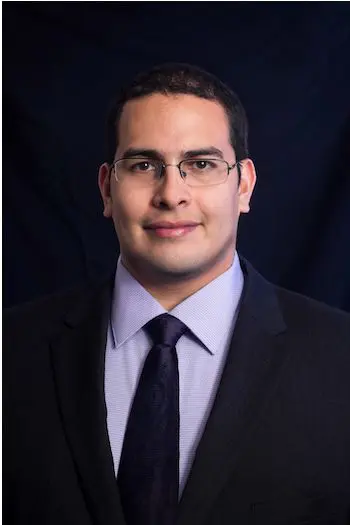
Dr. Dagoberto Estevez Ordonez, MD, University of Alabama, Birmingham
SBTF AANS Award, 2022
Dr. Nduom's group will utilize an antibody therapeutic to block suppression of immune cells in glioblastoma, allowing the immune system to directly attack tumor cells. Dr. Nduom will test this inhibitor, in preclinical models, in combination with an established checkpoint inhibitor to see if it improves the efficacy of the checkpoint inhibitor for GBM patients.

Dr. Edjah Nduom, MD Emory University
SBTF Research Grant 2022
EZH2 inhibition as a potential therapeutic avenue in the treatment of meningioma
Methods: Four human immortalized meningioma cell lines (IOMM-Lee, CH157, SF1335, and BenMen1), three mouse meningioma cell lines (MGS1, MGS2, and MGS3), and a panel of human primary cell cultures (WHO grade I and grade II) with varying protein expression of NF2, SMARCB1, and EZH2, were selected for investigation. Cells were treated with a selective small molecule inhibitor of EZH2. Cell proliferation was assessed via cell counting and clonogenic assay. Response to radiation treatment alone or in combination with EZH2 inhibition was assessed via proliferation assay.
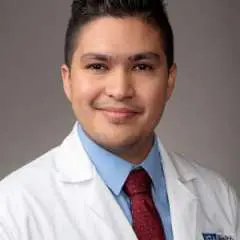
Dr. Joshua Casaos, UCLA Neurosurgery
SBTF Award in partnership with AANS, 2023
Thanks to your funding of Terry’s project, he was able to generate preliminary data that lead to submitting an NIH R01 grant application which was scored in the fundable range. He was also awarded an investigatory new drug (IND) approval to study a polyamine blocking drug from this project. He mentioned that this funding was a critical catalyst that allowed him to undertake an expensive analysis of human glioma extracellular fluid samples which provided insights to find a new target in glioma metabolism.
"Best available management of gliomas include includes surgery, chemotherapy, and radiation. Unfortunately fatal recurrence remains inevitable—typically within 2 years. Because tumor cells are widely infiltrative into critical regions of surrounding brain, surgery is never curative. However, it does provide privileged access to the unique biology of the human brain. With support of the American Brain Tumor Association, we utilized the intra-operative window of opportunity to sample chemicals from the live human brain tumor and surrounding brain using a technique called microdialysis. Microdialysis catheters reside in the space outside tumor cells, which provides insights about chemical used and created by the tumor cells over time. To help understand the unique biology of human brain tumors, we performed Microdialysis in different regions of each patient’s tumor and brain adjacent to tumor. We determined that the tumor is enriched for amino acids, which are the building blocks for proteins, as wellas a special class of biochemicals called “polyamines.” Polyamines help tumor cells avoid the immune system and the impacts of standard therapy. Based on these human findings and best available preclinical data, we submitted an investigational new drug (IND) application to the FDA to test the impacts of two polyamine blocking drugs used alone or in combination while monitoring results using microdialysis. This study was approved by the FDA and IRB."

Dr. Terry Burns, The Mayo Clinic
SBTF Award in partnership with ABTA 2021
"Glioblastoma (GBM) is the most aggressive primary brain tumor, and despite a standard of care for patients that includes maximal safe resection followed by chemotherapy and radiation, the prognosis is still grim. Unfortunately, new classes of medications such as checkpoint inhibitors that have revolutionized treatment for cancer outside of the CNS have so far been unsuccessful in clinical trials for GBM. However, drugs that activate the immune system by other means remain particularly promising candidates for the treatment of GBM due to its marked local and systemic immunosuppression. These mechanisms of immunosuppression are diverse and often redundant, which makes targeting any one agent insufficient to completely overcome the suppressive state. It is likely that combinatorial immunotherapy will be necessary in the development of successful regimens. Immunomodulatory molecules may be key agents in future therapeutic cocktails. Targeting these molecules’ receptors have already shown promise in clinical trials for a variety of solid cancers and in preclinical models of glioblastoma. In this study, we develop a new viral therapy and have validated its function. We are currently testing its utility in a mouse model ofGBM. Our findings will enable future studies in targeted immunotherapy, and they signify an exciting step
towards the future development and refinement of new therapeutic modalities in human clinical testing.
I envision a career as an academic physician-scientist who balances clinical practice with translational research, each one augmenting the other. The ABTA Jack & Fay Netchin Medical Student Summer Fellowship {funded by the SBTF} has been instrumental in introducing me to such a path by allowing me to engage in pioneering glioblastoma research with other highly motivated individuals. I have learned a variety of new techniques, and have worked on both basic science and clinical brain tumor research during my time in this fellowship. I believe that this work will directly lead to a novel glioblastoma therapy, and I am privileged to be a part of it.
Additionally, I am excited to share that the clinical work which this fellowship has enabled me to work on has resulted in compelling evidence that time to surgery matters for glioblastoma, which is a finding that has not been previously demonstrated for GBM and will likely impact care patterns for these patients."

Eric Chalif, University of California- San Francisco
MSSF Award in partnership with the ABTA, 2022
"Effective drug development in glioblastoma requires visualization of tumor evolution in response to experimental therapy.
Today, genomic and transcriptomic mechanisms of tumor resistance remain undetected in clinical trials due to the morbidity associated with surgical tissue collection. This study proposes a new method of liquid biopsy using an intra-cavitary reservoir for serial, outpatient cerebrospinal fluid collection. This minimally invasive technique facilitates prospectively tracking circulating tumor DNA and glioblastoma cells during a prospective clinical trial of niraparib, a
PARP1/2 inhibitor that represses DNA damage repair. The results will provide valuable translational insights into
transcriptomic and genomic glioma evolution in response to selective pressure from PARP1/2 inhibition, including putative glioblastoma resistance mechanisms and treatment-related cell state changes that can be leveraged to create better
combination therapies."
Charuta G. Furey, MD, Barrow Neurological Institute
2023-24 NREF & SBTF Research Fellowship Grant on behalf of the AANS/CNS Section on Tumors
"It is my long-term goal to become an independent clinical investigator and leader in the study of neurological cancer. Receiving funding from the American Brain Tumor Association and The Southeastern Brain Tumor Association allowed me to take concrete formative steps toward this goal and further inspired me to continue pursuing this work in my career. During my time as an ABTA-funded medical student investigator, I was able to work with and learn from leaders in the field of neurological cancer research on a cutting-edge project at a top institution. I learned skills needed to develop an impactful project proposal, submit application for funding, execute a project in an efficient manner, and collaborate across institutions. The laboratory techniques honed and collaborative mentoring relationships established during this work has bolstered my confidence and passion and prepared me for the crucial next steps in my career progression. As a direct result of this experience, I am prepared to complete future applications for funding, develop and lead independent research projects, work collaboratively across institutions, design and execute translational research, and mentor others. Thanks to the funded opportunity from ABTA, I feel not only inspired but empowered to continue to advocate for patients and work to discover new treatments for patients with neurological cancers."

Emily Lavell, The Mayo Clinic of Jacksonville
MSSF Research Project, Awarded 2020
His 2016 SBTF awarded grant, "Investigating the role of N-cadherin in the therapeutic resistance of Glioblastoma," provided results which resulted in submission to the Department of Defense and subsequent award of a two-year $664,000 DOD grant issued in February of 2018.
This grant resulted in subsequent federal funding from the Department of Defense for 2 years in the amount of $400,000 (+ Institutional indirect costs of about $200K). The research results were published in 2021 in the prestigious Journal of Clinical Investigation.
Osuka S, Zhu D, Zhang Z., Li C, Stackhouse CT, Sampetrean O, Olson JJ, Gillespie GY, Saya H, Willey CD, and Van Meir EG (2021). N-cadherin upregulation mediates adaptive radioresistance in glioblastoma. J Clin Invest 131, e136098 (in press)

Dr. Erwin Van Meir, University of Alabama, Birmingham
SBTF Phil Jory Scientific Award Grant, Awarded 2016
"The grant from SBTF supported a project focusing on exploiting glioblastoma cells’ metabolic vulnerability for more effective treatments for this lethal brain tumor. Findings from this project subsequently led to a NIH R01 grant that has allowed us to continue to work on the therapeutic strategy. Specifically, we have devised an approach to target glioblastoma cell’s deficiency in producing purine, metabolites that are essential building blocks for tumor cell propagation. We have been working on gaining new insight into how this therapeutic strategy can work and exploring ways to optimize it.
The support from SBTF has been extremely essential and helpful to our research. None of these accomplishments would have been possible without the generous support from the SBTF."
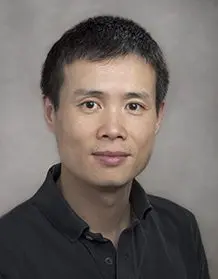
Dr. Yiping He, Duke University
SBTF Karen Herman Memorial Grant, Awarded 2016
Dr. Thompson's project resulted in exciting findings: research reflects a commonly used steroid, dexamethasone, plus a drug efflux inhibitor tariquidar can enhance the efficacy of the targeted chemotherapeutic agent, dastinib to treat DIPG.
Published in the Journal of Neurosurgery June 2019 issue: "ABC transporter Inhibition Plus Dexamethasone enhances the efficacy of convection enhanced delivery in H3.3K27M Mutant DIPG"
The purpose of the research project funded by the SBTF was to enhance the efficacy of chemotherapy delivered directly into diffuse intrinsic pontine gliomas (DIPG). DIPGs are some of the deadliest pediatric brain tumors and are uncurable with surgery. We found that adding steroids and an agent that decreased the ability of DIPG cells to pump out chemotherapy significantly increased the survival of mice with DIPG. These results were published in Neurosurgery in 2020 and add to our understanding of how to improve survival in children with DIPG.

Dr. Eric Thompson, Duke University
SBTF Dick Comanzo Memorial Award, Awarded 2016
"Your contributions, belief, and support of our work have most definitely allowed us to generate a foundation for gliomagenesis and how the mutations we study contribute to the tumors. We hope to share with you even more exciting ideas in this next application, which we believe, will be fundamental to future therapies. The proposal will be dealing with an immunotherapeutic approach to targeting the most common mutation identified in gliomas."

Dr. Hai Yan, Duke University
SBTF Phil Jory Scientific Award Grant, Awarded 2015
Therapeutic Targeting of Id1 in Glioblastomas
Aim 1.1: Presented at 2015 AACR mtg, expect to submit manuscript in 1-2 months. In planning stages for preparing an RO1 grant proposal to NIH.
Aim 1.2: Unable to demonstrate a significant capacity, will not pursue this avenue of research.
Aim 2: Will continue to test the efficacy, predict the drug will cross blood brain barrier. Experiments ongoing, expect the work will be combined with work from Aim 1.1

Dr. Hui-Kuo Shu, Emory University
SBTF Research Grant, Awarded 2014
This research proved to be an important stepping stone toward clinical trials using polio virus.
Interim report- Phase 1 of clinical trial in patients with recurrent GBM is progressing as planned, remarkable durable, complete clinical and radio-graphic responses in the first patients (as reported in application) are holding up. Currently observing similar responses in further patients.
This research was granted "Breakthrough Status" in 2016 which indicated the FDA wanted to speed up the research and saw great potential in the science.
This research was featured in a 60 Minutes story in March 2015. A follow up interview was held in May of 2016.
As of December 2019, this research was in Phase III Trials at several institutions and is receiving favorable results.
Support from SBTF enabled very important studies towards brain tumor therapy with recombinant poliovirus, PVSRIPO (all SBTF grants were related to this).
We reported clinical results of monotherapy (PVSRIPO alone) in recurrent GBM, showing unprecedented long-term survival and duration of response (New England Journal of Medicine, 2018). PVSRIPO is now (2021) in Phase-2 clinical trials [in combination with anti-PD1 (pembrolizumab)] against recurrent GBM at many leading cancer centers in the US (including at Duke in the Southeast).
We are in discussions with leading brain tumor experts in the country about the best strategy towards the first approved immunotherapy for GBM (PVSRIPO has Breakthrough Therapy Designation from FDA). In addition, PVSRIPO has shown great promise in recurrent, nonresectable melanoma (a Phase-1 clinical trial was just published; Journal of Immunotherapy of Cancer). It is now in Phase-2 clinical trials (in combination with anti-PD1) in recurrent, nonresectable melanoma at many leading cancer hospitals in the US. This trial allows patients with melanoma that has metastasized to the brain.

Dr. Matthias Gromeier, Duke University
SBTF Research Grant, Awarded 2014, 2008, 2006
"Glioblastoma is the most common and aggressive primary brain tumor in adults, with a median survival of 14 months after diagnosis. Tumor recurrence is nearly universal, due to a combination of treatment resistance, tumor invasiveness, and communication with other cells in the brain. It has been found, in particular, that glioblastoma are more aggressive when they grow in neurogenic regions of the brain that normally give rise to healthy stem cells. Preliminary evidence from Dr. Hugo Guerrero-Cazares’ lab indicated that communication between brain tumor cells and stem cells via extracellular vesicles induces a pro-cancer phenotype in neural stem cells. My project explored the role of these vesicles by intercepting their mechanism using a drug called chloramidine, which blocks their release. If the use of chloramidine successfully blocks extracellular communication by glioblastoma cells and results in a decreased cancer malignancy, this would be a novel therapeutic pathway for treating patients with malignant brain cancer. During my time working on this project, we were able to determine concentrations of this drug that were non-toxic to cells, a foundational step for further experiments exploring downstream effects of the drug. Additionally, we began to elucidate a trend in the drug’s ability to stop the release of extracellular vesicles. Experiments in the project are ongoing and seek to determine working concentrations and effects of this drug on cancer progression."

Emily Lavell, The Mayo Clinic of Jacksonville
MSSF Research Project & Findings, Awarded 2020
"We made significant headway; now have critical mass of data supporting the role of the antiviral immune response in oncolytic viral anti-tumor activity; applying for federal funding using this data. The SBTF funds allowed researcher to establish an animal model that permits examination of the immune mediated anti-tumor response independent of other viral anti-tumor effects."

Dr. Kevin Cassady, University of Alabama, Birmingham
SBTF Research Grant, Awarded 2014
"We did indeed publish a manuscript on the project that was supported by our SBTF grant in the journal Cancer Research, and the SBTF support is acknowledged in the publication. Regarding our work on the drug verteporfin, we recently wrapped up our early phase 0/1 trial of verteporfin in human GBM patients and are now trying to publish that research."

Dr. Renee Reed, Emory University
SBTF Research Grant, Awarded 2012
"R01 funding on the role of PPM1D in medulloblastoma, funded 2012-2018. This funding was possible in part due to seed funding from SBTF."

Dr. Craig Castellino, Emory University
SBTF Research Grant, Awarded 2010
Continued studies and submissions which resulted in 5 year RO1 grant from NIH of approx $1.6M

Dr. Erwin Van Meir, Emory University
SBTF Research Grant, Awarded 2009
"Research initially funded (in part) by SBTF in 2009 led to additional studies. An immunotoxin from the initial study, conducted by Vidya Chandramohan, Ph.D., Preston Robert Tisch Brain Tumor Center, is now being evaluated in a Phase I/II clinical trial for recurrent Glioblastoma patients. https://www.clinicaltrials.gov/ct2/show/NCT02303678."

Vidya Chandramohan, Ph.D., Preston Robert Tisch Brain Tumor Center
SBTF Research Grant, Awarded 2009
"The Brain Tumor Nanotechnology Laboratory has translated the use of the magnetic nano particles proposed in the SBTF grant over four years ago to a canine clinical trial at the University of Georgia. Canines with spontaneous brain tumors are being treated with the nano particles our laboratory synthesizes for safety and efficacy testing. We had promising results and hope to take this to humans soon. Manuscript has resulted from research."

Dr. Costas Hadjipanayis, Emory University
SBTF Research Grant, Awarded 2008
"Another victory for cancer researchers. This project which reduces tumor thrombosis by regulating the tissue factor pathway yielded findings which showed when tumor suppressor p14ARF is lost during tumor progression, this leads to the cocomitant loss of a factor that normally prevents coagulation". The advances mean anti-thrombotic agents might have anti-tumor effects Next step is to test the hypothesis in an animal model to see if this approach has promise for development of a novel therapeutic approach for patients with malignant brain tumors."

Dr. Erwin Van Meir, Emory University
SBTF Research Grant, Awarded 2009

Dr. Anita Hjelmeland, Duke University & University of Alabama, Birmingham
SBTF Research Grant 2005, Jerry Zucker Memorial Award 2017
"Brain tumors are the number one cause of cancer related death in children, with medulloblastoma (MB) being the most common subgroup. Genomic-based classification has enabled the stratification of MB into distinct subgroups: WNT, SHH, Group 3 and Group 4, each with its own histology, molecular drivers and outcomes. The standard of care for MB patients includes surgery, followed by radiation of the brain and spinal cord, and subsequent chemotherapy. Although significant survival benefit occurs for many patients, some of these tumors are metastatic and resistant to conventional therapies, and thus classified as high-risk disease. Moreover, many children that survive this standard of care treatment will develop severe cognitive and quality of life issues as they get older. These statistics highlight the urgent need to develop the next generation of cancer therapeutics for MB patients, especially for those harboring high-risk disease.
A natural compound used in Chinese medicine for centuries, triptolide, has been shown to have potent antitumor activity. Despite its well-known efficacy, the mechanism of action of triptolide in cancer remains unclear. We performed computer-based database analysis of genetic biomarkers derived from such patients. Our analyses identified group 3 medulloblastoma patients as likely to benefit from triptolide treatment. Consistent with this prediction, we showed that triptolide attenuates group 3 medulloblastoma growth and increases survival of mice harboring such tumors. Mechanistically, we show that triptolide works by reducing the levels of an enzyme (OGT) capable of modifying the activity of a key driver of gene expression (Myc) and that without this modification MYC was degraded. Like triptolide, Minnelide (a triptolide derivative in clinical trials), reduced the tumor burden of patient derived group 3 medulloblastoma models. Thus, triptolide/Minnelide represents a novel therapeutic strategy to evaluate in MYC expressing group 3 medulloblastoma patients, which represents a cohort of pediatric cancer patients with a dismal outcome."

Dr. David Robbins, University of Miami
SBTF Research Grant, Awarded 2018
Dr. Keqiang Ye received a grant funding for a project entitled "PIKE-A/Cdk4 Complex is a Novel Drug Target for Treating Glioblastoma"
Amplification of chromosome 12q13-q15 (Cyclin-dependent kinase 4 (CDK4) amplicon) is frequently observed in numerous human cancers including GBM (Glioblastoma). Phosphoinositide 3-kinase enhancer (PIKE) is located in CDK4 amplicon. However, the pathological significance of CDK4 amplicon in GBM formation remains incompletely understood. We show that co-expression of PIKE-A and CDK4 in TP53/PTEN double knockout GBM mouse model additively shortens the latency of glioma onset and survival compared to overexpression of these genes alone. Consequently, p-mTOR, p-Akt and p-ERK pathways are highly upregulated in the brain tumors, in alignment with their oncogenic activities by CDK4 and PIKE-A stably transfected in GBM cell lines. Hence, our findings support that PIKE amplification or overexpression coordinately acts with CDK4 to drive GBM tumorigenesis. This finding was reported in Oncogene 2017.
(Co-amplification of phosphoinositide 3-kinase enhancer A and cyclin-dependent kinase 4 triggers glioblastoma progression. Qi Q, Kang SS, Zhang S, Pham C, Fu H, Brat DJ, Ye K. Oncogene. 2017 Aug 10;36(32):4562-4572.)

Dr. Keqiang Ye, Emory University
Jeff Epperson Memorial Award Grant, Awarded 2016
Dr. Michael Graner, PhD received funding for a research grant entitled "Heat Shock Protein Vaccines as Immunotherapy against Malignant Glioma."

Dr. Michael Graner, PhD, Duke University
SBTF Research Grant, Awarded 2006
Dr. Ihrie and Dr. Irish received funding though the Ann Faulkenberry Memorial Award in 2017 for their project entitled “Dissecting the contribution of the niche and immune cells to patient outcome using single-cell protein measurements.”
"Funding from the SBTF to the Ihrie and Irish groups allowed us to leap forward in our studies of primary brain tumor tissue using single cell approaches. With the support of this award, we developed a suite of bench and computational tools, used these to reveal previously unrecognized cells within brain tumor tissue, and identified novel targets in these cells. Our approach focused on measuring many proteins at the same time in millions of tumor cells. This approach revealed types of cells that have not been observed in healthy brains. Out of all the new cell types seen, there were two that stood out – one that was seen only in very aggressive tumors, and another that was a hallmark of tumors with much better than average outcomes. We believe these findings, which were reported in eLife in 2020, represent a fundamental advance in our understanding of glioblastoma. No prior work had resolved glioblastoma cell types that were so closely linked to patient outcomes. We named the two new cell types based on the clinical outcomes of tumors that contain them. Perhaps the most important cell type found is the Glioblastoma Negative Prognostic (GNP) cell subset, which is found in the most aggressive glioblastomas. These GNP cells are the ‘worst of the worst’ within this terrible disease."
One of the main articles supported by this award can be freely accessed here.
Popular coverage of the work and descriptions of their broader collaboration can be found in this article, and on healio.com and was highlighted in an article from Vanderbilt Medicine.

Rebecca Ihrie, Ph.D., Jonathan Irish, Ph.D., Vanderbilt University
SBTF Ann Faulkenberry Memorial Award, Awarded 2017
Radiation therapy (RT) for brain cancers often leads to uncontrolled activation of brain’s immune cell microglia and a series of unfortunate events called complement activation. These complement proteins in the brain are important for maintaining the synaptic landscape that forms memory. We used a complement receptor inhibitor (PMX205) to prevent uncontrolled activation of microglia and complement cascade that prevented brain injury surrounding the brain tumor. In a nutshell, we found a way to prevent brain injury and cognitive dysfunction without interfering with the therapeutic efficacy of RT for brain cancers.
PMX205 can be taken orally and it’s currently under clinical trial for ALS in Australia that will facilitate clinical translation in the future.
ABTA Discovery Grant Targeting Glioma Complement Signaling
Distributed via an American Brain Tumor Association (ABTA) Discovery Grant

Dr. Munjal Acharya, PhD University of California, Irvine
SBTF Research Grant, Awarded 2020
Dr. Hao's clinical interests are mainly in the molecular diagnosis and classification of brain tumors.
"The combination treatment of GBM with TRAIL and Hsp90 inhibitors” did not show synergistic effects on GBM after we tested the drugs in combination on a panel of glioblastoma cell lines and stem cell-enriched neurospheres."

Dr. Chunhai "Charlie" Hoa, Emory University
SBTF Research Grant, Awarded 2007
Yusuf Mehkri’s lab has developed a novel hydrogel vaccine, which can better stimulate immune cells to attack GBM cells in the brain. Yusuf will examine using this novel vaccine in combination with radiation and temozolomide to gauge the efficacy of the vaccine to increase GBM cell death. He also aims to determine the optimal timing of administering the vaccine relative to standard of care. The results of this project could lead to an effective off-the-shelf vaccine for GBM patients.
"Our group has shown that a dendritic cell (DC – a type of immune cell) vaccine can induce a robust anti-tumor response and can extend overall survival in patients with glioblastoma (GBM). The vaccine effectively targets cytomegalovirus (CMV) antigens that are uniquely present in GBM. Studies have shown that CMV can affect the malignancy of GBM cancer cells helping them to survive and evade immune cells in the brain. Although effective, one significant issue with this current DC vaccine model is production. Production takes weeks, is costly, and requires expertise and invasive procedures for patients. To address this issue, we have developed a novel vaccine that can be loaded with a chemokine (chemical signal) to attract DCs and a tumor antigen to initiate an anti-tumor immune response. Thus far, we have shown that this novel vaccine can induce a strong immune response resulting in tumor regression in mouse cancer models.
We now need to test how this vaccine interacts with standard therapy. Given the immunomodulatory properties of temozolomide (TMZ) and radiotherapy (RT), we hypothesize that timing of RT and TMZ delivery can be used to enhance the immune response generated by our hydrogel-based vaccine. This project will evaluate and compare these effects in mouse cancer models in the hopes of maximizing the vaccine’s therapeutic efficacy. Findings from this project will bring us one step closer to an off-the-shelf vaccine that can be added to the standard of care regimen for patients with GBM. It will also help drive further research into similar vaccine platforms that are easy to produce and effective."
Yusuf Mehkri, University of Florida
MSSF Research Project, Awarded 2021
Intratumoral Extracellular Metabolomic Biomarkers of IDH-mutant Glioma
IDH-mutant gliomas generally present at lower grade and are treated, but then recur years later. Therefore, clinical trials can take decades. Dr. Burns will capture biomarker information from patients undergoing treatment and compare it to biomarkers from mouse models. He hypothesizes that the information will yield rapid, individualized information about a patient’s response to a treatment, reducing the time spent on ineffective therapies and ultimately shortening clinical trials.
"IDH-mutant gliomas are the most common gliomas of young adults. Despite initial sensitivity to chemotherapy and radiation, they invariably progress into treatment-resistant and ultimately fatal tumors. Translation of novel therapies for glioma is complicated by the lack of biomarkers that indicate treatment effectiveness. Survival remains the gold standard outcome measure. Clinical trials for patients with IDH-mutant gliomas may require a decade to yield survival results, hampering timely progress in a complex field. When trials fail, as is typically the case, few insights into why the treatment failed are available to guide therapeutic improvements. The cycle is then repeated with new novel candidates leading to a growing list of failed drugs without clear directions for improvement. New tools are urgently needed to accelerate discovery of novel therapies. Here we propose to evaluate biomarkers from live human IDH-mutant gliomas during surgery, and will compare these to findings from mice carrying human IDH-mutant gliomas. We will also determine if biomarker levels from the live tumor respond to currently available therapies in real time in mice. If so, this work can provide a path forward to more rapidly determine which therapies or combinations are most effective within individual patients. We are optimistic that this strategy can open a new frontier of rapid individualized feedback which is so urgently needed to cure gliomas."

Terry Burns, MD, PhD, Mayo Clinic
SBTF Research Grant 2021
Recent molecular studies have revealed important insights into the biology of meningioma
formation and progression. However, clinical translation has been limited, and there remain no effective chemotherapies. Due to the dependence of these tumors on epigenetic dysregulation, histone deacetylase inhibitors (HDACi) represent a promising therapeutic approach, and numerous reports have observed efficacy of these drugs in arresting meningioma growth in culture and mice. Translation into a clinical setting will require a better understanding of the molecular pathways mediating growth inhibition, as well as robust biomarkers that identify optimal patients. In the present study, I will perform comprehensive molecular profiling on frozen meningioma specimens from HDACi responsive and resistant patients, aiming to identify predictive biomarkers for future clinical use. Furthermore, I will use transcriptional and epigenetic profiling to elucidate molecular changes associated with HDACi treatment, comparing a library of patient derived cell cultures before and after exposure to this medication. The results of this study will lay essential groundwork for future clinical trials, providing key markers for prospective patient stratification, as well as insights into downstream mechanisms that could identify synergistic co-therapies and potential pathways of resistance.

Dr. Mark Youngblood, MD, PHD, Northwestern University
SBTF Research Grant, Awarded 2022
The goal was to molecularly characterize the tumor microenvironment (TME) and evaluate immunologic parameters in canine glioma patients before and after treatment with oncolytic human IL-12-expressing herpes simplex virus (M032).
They assessed 22 pet dogs with sporadically occurring gliomas that were enrolled in Stage 1 of an ongoing veterinary clinical trial to establish safety of intratumoral oncoviral therapy with M032, a genetically modified oncolytic herpes simplex virus (oHSV) between January 2018 and August 2020. Pre- and post-treatment specimens were evaluated with immunohistochemistry, NanoString, Luminex cytokine profiling and multi-parameter flow cytometry.
The findings indicated that M032 modulates the tumor-immune microenvironment in the canine glioma model, specifically effecting a shift from TH2 (IL-4) to TH1 (IFNγ) cytokine production within recirculating T cells after M032 treatment.

Dr. Dagoberto Estevez Ordonez, MD, University of Alabama, Birmingham
SBTF AANS Award, 2022
Dr. Nduom's group will utilize an antibody therapeutic to block suppression of immune cells in glioblastoma, allowing the immune system to directly attack tumor cells. Dr. Nduom will test this inhibitor, in preclinical models, in combination with an established checkpoint inhibitor to see if it improves the efficacy of the checkpoint inhibitor for GBM patients.

Dr. Edjah Nduom, MD Emory University
SBTF Research Grant 2022
EZH2 inhibition as a potential therapeutic avenue in the treatment of meningioma
Methods: Four human immortalized meningioma cell lines (IOMM-Lee, CH157, SF1335, and BenMen1), three mouse meningioma cell lines (MGS1, MGS2, and MGS3), and a panel of human primary cell cultures (WHO grade I and grade II) with varying protein expression of NF2, SMARCB1, and EZH2, were selected for investigation. Cells were treated with a selective small molecule inhibitor of EZH2. Cell proliferation was assessed via cell counting and clonogenic assay. Response to radiation treatment alone or in combination with EZH2 inhibition was assessed via proliferation assay.

Dr. Joshua Casaos, UCLA Neurosurgery
SBTF Award in partnership with AANS, 2023
Thanks to your funding of Terry’s project, he was able to generate preliminary data that lead to submitting an NIH R01 grant application which was scored in the fundable range. He was also awarded an investigatory new drug (IND) approval to study a polyamine blocking drug from this project. He mentioned that this funding was a critical catalyst that allowed him to undertake an expensive analysis of human glioma extracellular fluid samples which provided insights to find a new target in glioma metabolism.
"Best available management of gliomas include includes surgery, chemotherapy, and radiation. Unfortunately fatal recurrence remains inevitable—typically within 2 years. Because tumor cells are widely infiltrative into critical regions of surrounding brain, surgery is never curative. However, it does provide privileged access to the unique biology of the human brain. With support of the American Brain Tumor Association, we utilized the intra-operative window of opportunity to sample chemicals from the live human brain tumor and surrounding brain using a technique called microdialysis. Microdialysis catheters reside in the space outside tumor cells, which provides insights about chemical used and created by the tumor cells over time. To help understand the unique biology of human brain tumors, we performed Microdialysis in different regions of each patient’s tumor and brain adjacent to tumor. We determined that the tumor is enriched for amino acids, which are the building blocks for proteins, as wellas a special class of biochemicals called “polyamines.” Polyamines help tumor cells avoid the immune system and the impacts of standard therapy. Based on these human findings and best available preclinical data, we submitted an investigational new drug (IND) application to the FDA to test the impacts of two polyamine blocking drugs used alone or in combination while monitoring results using microdialysis. This study was approved by the FDA and IRB."

Dr. Terry Burns, The Mayo Clinic
SBTF Award in partnership with ABTA 2021
"Glioblastoma (GBM) is the most aggressive primary brain tumor, and despite a standard of care for patients that includes maximal safe resection followed by chemotherapy and radiation, the prognosis is still grim. Unfortunately, new classes of medications such as checkpoint inhibitors that have revolutionized treatment for cancer outside of the CNS have so far been unsuccessful in clinical trials for GBM. However, drugs that activate the immune system by other means remain particularly promising candidates for the treatment of GBM due to its marked local and systemic immunosuppression. These mechanisms of immunosuppression are diverse and often redundant, which makes targeting any one agent insufficient to completely overcome the suppressive state. It is likely that combinatorial immunotherapy will be necessary in the development of successful regimens. Immunomodulatory molecules may be key agents in future therapeutic cocktails. Targeting these molecules’ receptors have already shown promise in clinical trials for a variety of solid cancers and in preclinical models of glioblastoma. In this study, we develop a new viral therapy and have validated its function. We are currently testing its utility in a mouse model ofGBM. Our findings will enable future studies in targeted immunotherapy, and they signify an exciting step
towards the future development and refinement of new therapeutic modalities in human clinical testing.
I envision a career as an academic physician-scientist who balances clinical practice with translational research, each one augmenting the other. The ABTA Jack & Fay Netchin Medical Student Summer Fellowship {funded by the SBTF} has been instrumental in introducing me to such a path by allowing me to engage in pioneering glioblastoma research with other highly motivated individuals. I have learned a variety of new techniques, and have worked on both basic science and clinical brain tumor research during my time in this fellowship. I believe that this work will directly lead to a novel glioblastoma therapy, and I am privileged to be a part of it.
Additionally, I am excited to share that the clinical work which this fellowship has enabled me to work on has resulted in compelling evidence that time to surgery matters for glioblastoma, which is a finding that has not been previously demonstrated for GBM and will likely impact care patterns for these patients."

Eric Chalif, University of California- San Francisco
MSSF Award in partnership with the ABTA, 2022
"Effective drug development in glioblastoma requires visualization of tumor evolution in response to experimental therapy.
Today, genomic and transcriptomic mechanisms of tumor resistance remain undetected in clinical trials due to the morbidity associated with surgical tissue collection. This study proposes a new method of liquid biopsy using an intra-cavitary reservoir for serial, outpatient cerebrospinal fluid collection. This minimally invasive technique facilitates prospectively tracking circulating tumor DNA and glioblastoma cells during a prospective clinical trial of niraparib, a
PARP1/2 inhibitor that represses DNA damage repair. The results will provide valuable translational insights into
transcriptomic and genomic glioma evolution in response to selective pressure from PARP1/2 inhibition, including putative glioblastoma resistance mechanisms and treatment-related cell state changes that can be leveraged to create better
combination therapies."
Charuta G. Furey, MD, Barrow Neurological Institute
2023-24 NREF & SBTF Research Fellowship Grant on behalf of the AANS/CNS Section on Tumors
"It is my long-term goal to become an independent clinical investigator and leader in the study of neurological cancer. Receiving funding from the American Brain Tumor Association and The Southeastern Brain Tumor Association allowed me to take concrete formative steps toward this goal and further inspired me to continue pursuing this work in my career. During my time as an ABTA-funded medical student investigator, I was able to work with and learn from leaders in the field of neurological cancer research on a cutting-edge project at a top institution. I learned skills needed to develop an impactful project proposal, submit application for funding, execute a project in an efficient manner, and collaborate across institutions. The laboratory techniques honed and collaborative mentoring relationships established during this work has bolstered my confidence and passion and prepared me for the crucial next steps in my career progression. As a direct result of this experience, I am prepared to complete future applications for funding, develop and lead independent research projects, work collaboratively across institutions, design and execute translational research, and mentor others. Thanks to the funded opportunity from ABTA, I feel not only inspired but empowered to continue to advocate for patients and work to discover new treatments for patients with neurological cancers."

Emily Lavell, The Mayo Clinic of Jacksonville
MSSF Research Project, Awarded 2020
His 2016 SBTF awarded grant, "Investigating the role of N-cadherin in the therapeutic resistance of Glioblastoma," provided results which resulted in submission to the Department of Defense and subsequent award of a two-year $664,000 DOD grant issued in February of 2018.
This grant resulted in subsequent federal funding from the Department of Defense for 2 years in the amount of $400,000 (+ Institutional indirect costs of about $200K). The research results were published in 2021 in the prestigious Journal of Clinical Investigation.
Osuka S, Zhu D, Zhang Z., Li C, Stackhouse CT, Sampetrean O, Olson JJ, Gillespie GY, Saya H, Willey CD, and Van Meir EG (2021). N-cadherin upregulation mediates adaptive radioresistance in glioblastoma. J Clin Invest 131, e136098 (in press)

Dr. Erwin Van Meir, University of Alabama, Birmingham
SBTF Phil Jory Scientific Award Grant, Awarded 2016
"The grant from SBTF supported a project focusing on exploiting glioblastoma cells’ metabolic vulnerability for more effective treatments for this lethal brain tumor. Findings from this project subsequently led to a NIH R01 grant that has allowed us to continue to work on the therapeutic strategy. Specifically, we have devised an approach to target glioblastoma cell’s deficiency in producing purine, metabolites that are essential building blocks for tumor cell propagation. We have been working on gaining new insight into how this therapeutic strategy can work and exploring ways to optimize it.
The support from SBTF has been extremely essential and helpful to our research. None of these accomplishments would have been possible without the generous support from the SBTF."

Dr. Yiping He, Duke University
SBTF Karen Herman Memorial Grant, Awarded 2016
Dr. Thompson's project resulted in exciting findings: research reflects a commonly used steroid, dexamethasone, plus a drug efflux inhibitor tariquidar can enhance the efficacy of the targeted chemotherapeutic agent, dastinib to treat DIPG.
Published in the Journal of Neurosurgery June 2019 issue: "ABC transporter Inhibition Plus Dexamethasone enhances the efficacy of convection enhanced delivery in H3.3K27M Mutant DIPG"
The purpose of the research project funded by the SBTF was to enhance the efficacy of chemotherapy delivered directly into diffuse intrinsic pontine gliomas (DIPG). DIPGs are some of the deadliest pediatric brain tumors and are uncurable with surgery. We found that adding steroids and an agent that decreased the ability of DIPG cells to pump out chemotherapy significantly increased the survival of mice with DIPG. These results were published in Neurosurgery in 2020 and add to our understanding of how to improve survival in children with DIPG.

Dr. Eric Thompson, Duke University
SBTF Dick Comanzo Memorial Award, Awarded 2016
"Your contributions, belief, and support of our work have most definitely allowed us to generate a foundation for gliomagenesis and how the mutations we study contribute to the tumors. We hope to share with you even more exciting ideas in this next application, which we believe, will be fundamental to future therapies. The proposal will be dealing with an immunotherapeutic approach to targeting the most common mutation identified in gliomas."

Dr. Hai Yan, Duke University
SBTF Phil Jory Scientific Award Grant, Awarded 2015
Therapeutic Targeting of Id1 in Glioblastomas
Aim 1.1: Presented at 2015 AACR mtg, expect to submit manuscript in 1-2 months. In planning stages for preparing an RO1 grant proposal to NIH.
Aim 1.2: Unable to demonstrate a significant capacity, will not pursue this avenue of research.
Aim 2: Will continue to test the efficacy, predict the drug will cross blood brain barrier. Experiments ongoing, expect the work will be combined with work from Aim 1.1

Dr. Hui-Kuo Shu, Emory University
SBTF Research Grant, Awarded 2014
This research proved to be an important stepping stone toward clinical trials using polio virus.
Interim report- Phase 1 of clinical trial in patients with recurrent GBM is progressing as planned, remarkable durable, complete clinical and radio-graphic responses in the first patients (as reported in application) are holding up. Currently observing similar responses in further patients.
This research was granted "Breakthrough Status" in 2016 which indicated the FDA wanted to speed up the research and saw great potential in the science.
This research was featured in a 60 Minutes story in March 2015. A follow up interview was held in May of 2016.
As of December 2019, this research was in Phase III Trials at several institutions and is receiving favorable results.
Support from SBTF enabled very important studies towards brain tumor therapy with recombinant poliovirus, PVSRIPO (all SBTF grants were related to this).
We reported clinical results of monotherapy (PVSRIPO alone) in recurrent GBM, showing unprecedented long-term survival and duration of response (New England Journal of Medicine, 2018). PVSRIPO is now (2021) in Phase-2 clinical trials [in combination with anti-PD1 (pembrolizumab)] against recurrent GBM at many leading cancer centers in the US (including at Duke in the Southeast).
We are in discussions with leading brain tumor experts in the country about the best strategy towards the first approved immunotherapy for GBM (PVSRIPO has Breakthrough Therapy Designation from FDA). In addition, PVSRIPO has shown great promise in recurrent, nonresectable melanoma (a Phase-1 clinical trial was just published; Journal of Immunotherapy of Cancer). It is now in Phase-2 clinical trials (in combination with anti-PD1) in recurrent, nonresectable melanoma at many leading cancer hospitals in the US. This trial allows patients with melanoma that has metastasized to the brain.

Dr. Matthias Gromeier, Duke University
SBTF Research Grant, Awarded 2014, 2008, 2006
"Glioblastoma is the most common and aggressive primary brain tumor in adults, with a median survival of 14 months after diagnosis. Tumor recurrence is nearly universal, due to a combination of treatment resistance, tumor invasiveness, and communication with other cells in the brain. It has been found, in particular, that glioblastoma are more aggressive when they grow in neurogenic regions of the brain that normally give rise to healthy stem cells. Preliminary evidence from Dr. Hugo Guerrero-Cazares’ lab indicated that communication between brain tumor cells and stem cells via extracellular vesicles induces a pro-cancer phenotype in neural stem cells. My project explored the role of these vesicles by intercepting their mechanism using a drug called chloramidine, which blocks their release. If the use of chloramidine successfully blocks extracellular communication by glioblastoma cells and results in a decreased cancer malignancy, this would be a novel therapeutic pathway for treating patients with malignant brain cancer. During my time working on this project, we were able to determine concentrations of this drug that were non-toxic to cells, a foundational step for further experiments exploring downstream effects of the drug. Additionally, we began to elucidate a trend in the drug’s ability to stop the release of extracellular vesicles. Experiments in the project are ongoing and seek to determine working concentrations and effects of this drug on cancer progression."

Emily Lavell, The Mayo Clinic of Jacksonville
MSSF Research Project & Findings, Awarded 2020
"We made significant headway; now have critical mass of data supporting the role of the antiviral immune response in oncolytic viral anti-tumor activity; applying for federal funding using this data. The SBTF funds allowed researcher to establish an animal model that permits examination of the immune mediated anti-tumor response independent of other viral anti-tumor effects."

Dr. Kevin Cassady, University of Alabama, Birmingham
SBTF Research Grant, Awarded 2014
"We did indeed publish a manuscript on the project that was supported by our SBTF grant in the journal Cancer Research, and the SBTF support is acknowledged in the publication. Regarding our work on the drug verteporfin, we recently wrapped up our early phase 0/1 trial of verteporfin in human GBM patients and are now trying to publish that research."

Dr. Renee Reed, Emory University
SBTF Research Grant, Awarded 2012
"R01 funding on the role of PPM1D in medulloblastoma, funded 2012-2018. This funding was possible in part due to seed funding from SBTF."

Dr. Craig Castellino, Emory University
SBTF Research Grant, Awarded 2010
Continued studies and submissions which resulted in 5 year RO1 grant from NIH of approx $1.6M

Dr. Erwin Van Meir, Emory University
SBTF Research Grant, Awarded 2009
"Research initially funded (in part) by SBTF in 2009 led to additional studies. An immunotoxin from the initial study, conducted by Vidya Chandramohan, Ph.D., Preston Robert Tisch Brain Tumor Center, is now being evaluated in a Phase I/II clinical trial for recurrent Glioblastoma patients. https://www.clinicaltrials.gov/ct2/show/NCT02303678."

Vidya Chandramohan, Ph.D., Preston Robert Tisch Brain Tumor Center
SBTF Research Grant, Awarded 2009
"The Brain Tumor Nanotechnology Laboratory has translated the use of the magnetic nano particles proposed in the SBTF grant over four years ago to a canine clinical trial at the University of Georgia. Canines with spontaneous brain tumors are being treated with the nano particles our laboratory synthesizes for safety and efficacy testing. We had promising results and hope to take this to humans soon. Manuscript has resulted from research."

Dr. Costas Hadjipanayis, Emory University
SBTF Research Grant, Awarded 2008
"Another victory for cancer researchers. This project which reduces tumor thrombosis by regulating the tissue factor pathway yielded findings which showed when tumor suppressor p14ARF is lost during tumor progression, this leads to the cocomitant loss of a factor that normally prevents coagulation". The advances mean anti-thrombotic agents might have anti-tumor effects Next step is to test the hypothesis in an animal model to see if this approach has promise for development of a novel therapeutic approach for patients with malignant brain tumors."

Dr. Erwin Van Meir, Emory University
SBTF Research Grant, Awarded 2009



